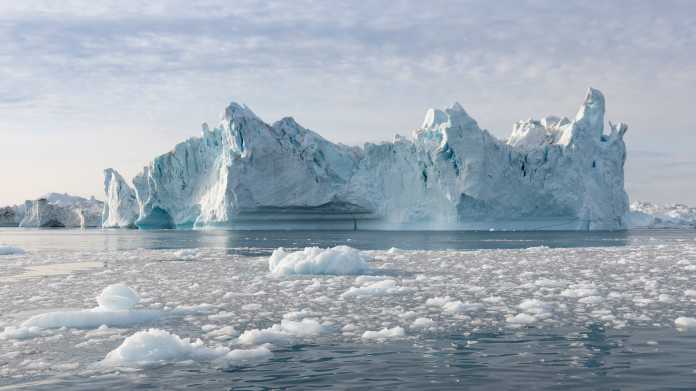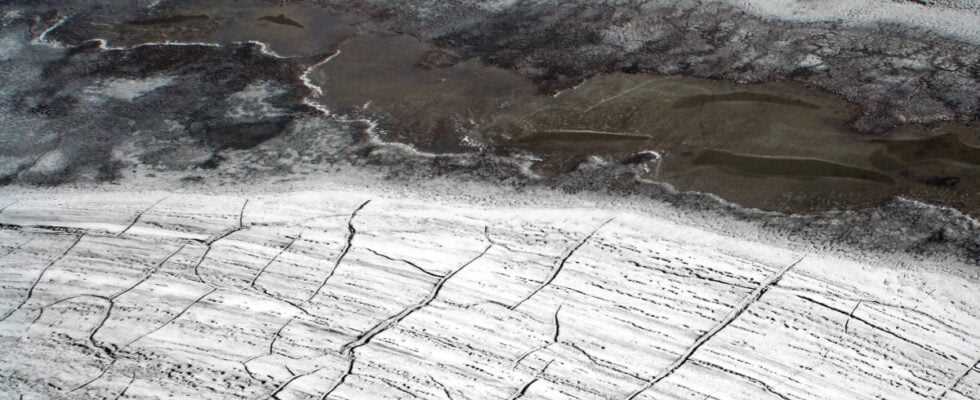Houses fall, pipelines burst, roads sag – everyday life in the far north. 30 to 50 percent of today’s infrastructure in the landscapes around the Arctic Ocean could be destroyed by 2050. Despite the acute threat to infrastructure from global warming, construction continues around the Arctic. Despite international climate protection efforts, gas and oil production is booming – also for the German energy supply.
Huge, ever-expanding mining pits in Siberia and northern Canada provide the high-tech metals that are so essential for wind turbines, solar cells, batteries, electronic circuits, computers and smartphones, including copper, nickel, chromium, vanadium, cobalt and many others.
Around 69 percent of all residential buildings, traffic routes and industrial plants in the permafrost regions are located where the ground will soon hardly freeze all year round. The soft mud bottom destabilizes an infrastructure that was once built on hard ice. At least 120,000 buildings, 40,000 kilometers of roads and 9,500 kilometers of pipelines are affected, as a working group led by Jan Hjort from the University of Oulu in Finland recently calculated in an article in “Nature Reviews Earth & Environment”.
In the coming decades, around 4.3 million people in the far north will not only lose buildings and roads, but also traditional hunting and hiking areas, as well as cultural sites. This in turn was the result of an assessment by a research group headed by Anna Irrgang from the Alfred Wegener Institute for Polar and Marine Research in Bremerhaven.
Focus on the permafrost soil
The publications are part of a collection of work by various international permafrost expert groups attempting to compile the current knowledge of physical, biogeochemical, ecosystemic and economic changes in landscapes around the Arctic Ocean. Because climate change is hitting particularly hard here. In the past 50 years, the Arctic has warmed by more than three degrees, three times faster than the rest of the globe.
Hjort is convinced that Siberia will be hit hardest. And here, above all, the so-called Yedoma landscapes, hilly plains in which the ground consists of 50 to 90 percent frozen water. Only then does it become so stable that buildings can be erected on it. They are also particularly rich in organic material.
This means enormous costs for Russia in the future. Because permafrost soils cover more than 65 percent of the Russian territory. The repairs to the roads and paths alone, which are being destroyed by the thawing ground, are likely to cost the Russian state the equivalent of seven billion US dollars between 2020 and 2050. It will be even more expensive to replace the sinking houses in settlements and cities. The researchers are assuming the equivalent of USD 500 to 600 million per year.
Arctic coasts particularly sensitive
While the buildings in the frozen inland are sagging, whole villages on the coasts slide into the sea from time to time. Because the Arctic coasts are particularly sensitive to climate change, as Irrgang and her colleagues point out. In Alaska, Canada and Siberia, the permafrost cliffs are often up to 40 meters high and consist of up to 80 percent water ice. Global warming is causing them to thaw more and more extensively and slide into the sea. Around 14 megatons of organic carbon come together every year, which corresponds to more than 51 megatons of CO₂. Herschel Island in northern Canada alone loses up to 22 meters of its cliffs every year.
“Our current understanding of Arctic coastal dynamics is fragmented because there is insufficient data on environmental factors and shoreline changes with high spatial and temporal resolution,” says Anna Irrgang future scenarios could be made more precise.
In another overview article, experts around Kimberley R. Miner, systems engineer at the NASA Jet Propulsion Lab in California, try to show to what extent the feared massive carbon emissions from CO₂ and methane from permafrost soils can be realistically estimated today.
Frozen carbon could become a problem
The upper layers of the northern permafrost probably store around 1.7 gigatonnes of carbon – a huge store. In fact, as it thaws, it could mutate into a source of carbon, scientists fear. However, soil carbon varies regionally between 17 and 73 percent, making it difficult to estimate the total amount of frozen carbon.
However, how quickly and to what extent carbon gets into the atmosphere in the form of CO₂ and methane is still largely an open question. The IPCC, for example, cautiously held back in its 2019 special report on the oceans and cryosphere.
These are microorganisms that come to life through the heat and break down the remains of organisms that have been frozen for thousands of years, primarily into CO₂, but also into methane and other substances.

The more the permafrost thaws, the more oxygen-poor, boggy soil, thermo-karst depressions or caves are formed, from which methane is more likely to outgas, a climate gas that is 25 times stronger but also short-lived than CO2.
Challenge of estimating CO₂ emissions
Not to be neglected are the increasingly frequent forest fires in the almost endless expanses of the tundra, which are driving up CO₂ emissions enormously.
According to Miners and their colleagues, current estimates are therefore extremely inaccurate. On-site measurements are still incomplete and satellite measurements are not planned until 2025.
However, there could also be a factor counteracting the emissions from the thawing tundra soils: the simultaneous greening of the Arctic. This could compensate for part of the released permafrost carbon, because newly growing biomass incorporates CO₂ again. At least that is what initial model simulations indicate.

(bsc)

